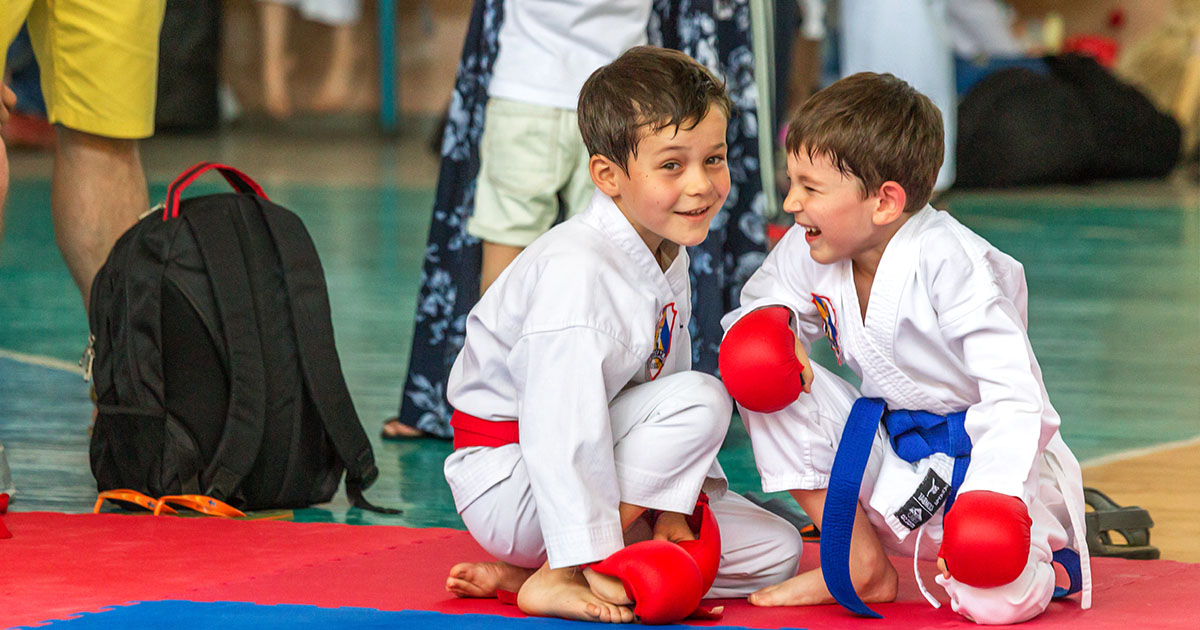Dancing to the Top: Setting your Child up for Success
Dancing is an excellent activity for keeping kids’ physical activity levels high. It’s social, fun, and therapeutic, but most importantly, it keeps them moving so that they can build a great foundation for health and fitness.
For first-timers, a dance class can be intimidating. As a parent, there are many things you can do to lessen this emotional burden, such as setting realistic expectations and being there for moral support. From finding the perfect style of dance for your child to helping them get over stage fright, here are some tips on setting your child up for success.
The Foundation
Setting appropriate expectations can help your child adjust to his or her first dance classes. While classes are fun and physically interactive, children also need to be attentive and respectful towards their instructor and peers. Having a conversation with your child about this type of classroom setting beforehand can help him or her succeed and get the most out of each dance class.
Participating in a dance class can be a highly social experience; this is one reason why children find them especially engaging and enjoyable. To encourage your child to make friends, you can socialize with other parents, arrange carpools, ask your child to introduce their classmates to you, or even set up a get-together outside of class.
Many children will benefit from having a pre- and post-class routine. A good pre-class schedule may consist of consuming a small snack and drink, getting changed into their dancewear, meditating or using other breathing techniques, setting an intention for the class, and checking in.
This can help prepare your kids, while also helping them find their focus. After class, encourage your child to demonstrate what he or she learned at home. Inspiring your child to teach you is the best way to boost learning; simultaneously, recalling routines will lead to better retention and mastery that increases his or her confidence. Just remember not to critique or correct, as your child could be sensitive to your evaluation. Instead, ask the instructor if your child is executing the motions correctly and if not, the instructor can address it during class.
Finding their Style
With so many different styles of dance to choose from, it can be challenging for parents to determine what the best style for their child is. A reputable dance studio can typically offer their help, and knowledgeable instructors may be able to teach snippets of different choreography to find out which styles your child prefers. Remember: you don’t have to commit to one style at an early age.
Use this as an opportunity to explore what your child enjoys the most. Then, once you find the right style, you can invest in shoes and apparel, since varying styles require specific apparel. Different personalities and certain strengths and weaknesses may make one style a better fit than another. For example, a child with a shorter attention span or low self-discipline may not enjoy ballet as much as modern forms of dance. Tumbling may be more appropriate for kids with high energy. Just keep in mind that, while a parent may have different interests, it’s the child who is practicing dance.
Performing on Stage
Learning how to deal with performance anxiety at an early age can be quite beneficial. Throughout their education, students will have to make presentations and speeches in front of classrooms, and their future careers may also require public speaking or performance skills. Overcoming stage fright helps build self-confidence and improves their on-stage performance.
When your child gets anxious, showing empathy and assuring them that what they're feeling is normal can make a big difference. Avoid ignoring their feelings or brushing off their concerns; instead, demonstrate coping mechanisms (such as journaling, meditation, or breathing techniques) that will enable them to mitigate those feelings. Children will also react to your subtle cues, so remaining calm and collected will help them follow suit.
Are you an instructor or a dance school owner? Check out our music and dance studio software that can help you manage your operations, so you can focus on teaching kids the beauty of dance.
What are your best tips for someone practicing dance for the first time? Let us know on Facebook and follow us on Twitter and Google+, to stay up to date with all of your Xplor Recreation news.




